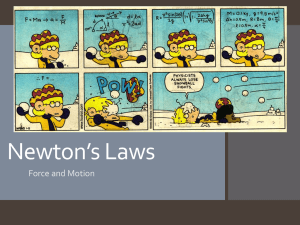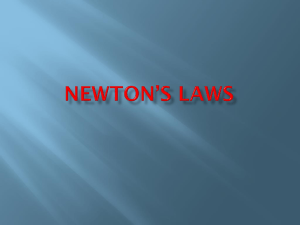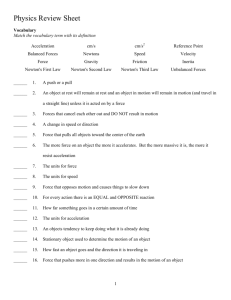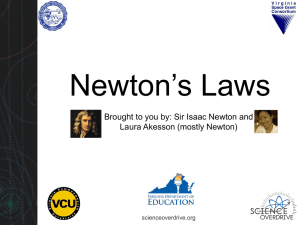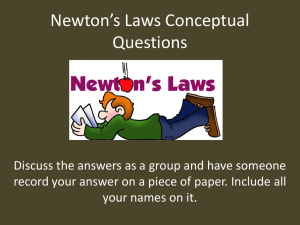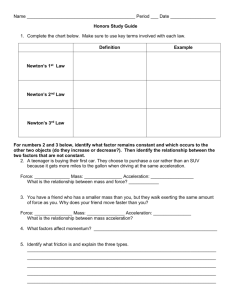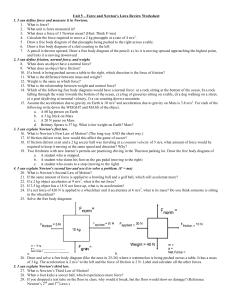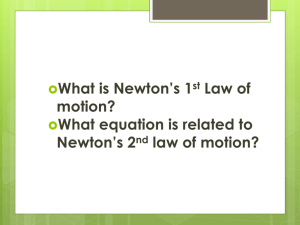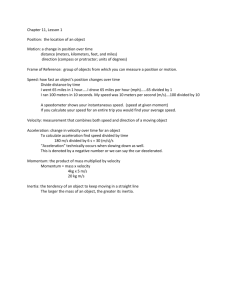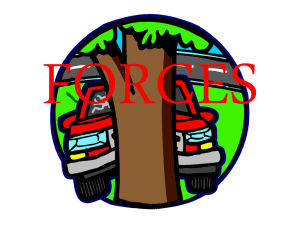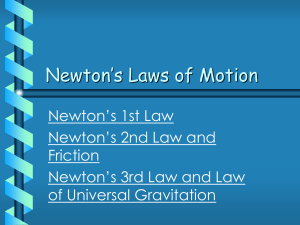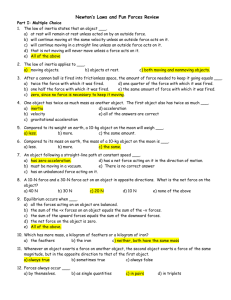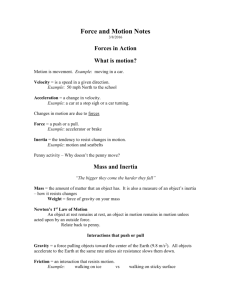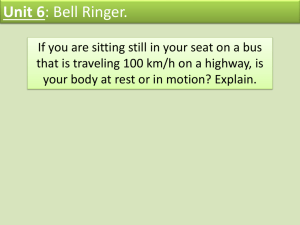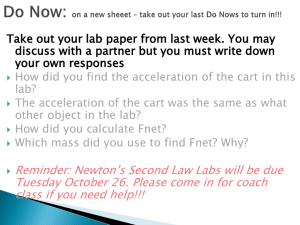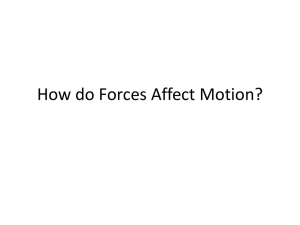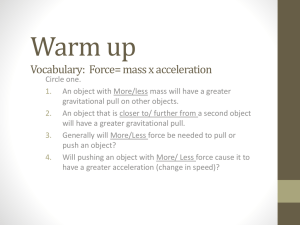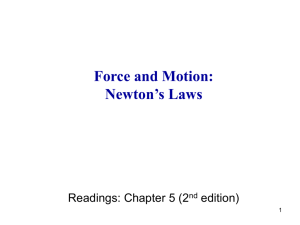1 Newton`s Laws
advertisement
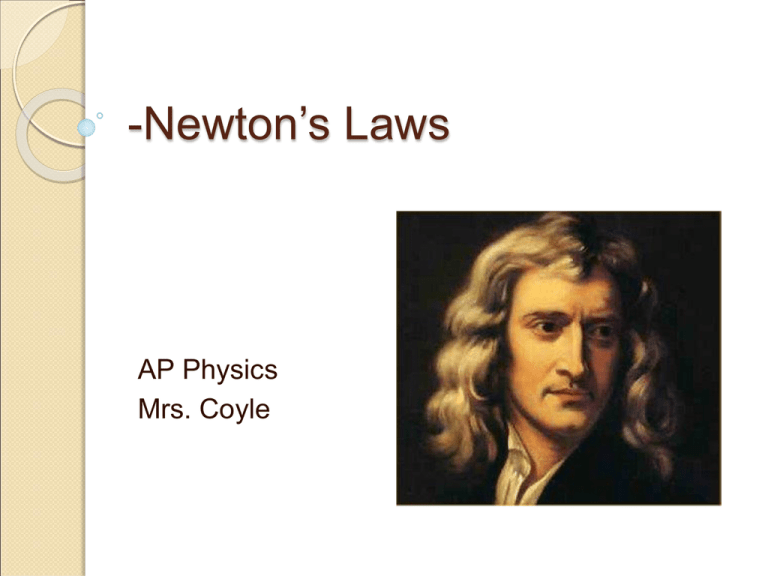
-Newton’s Laws AP Physics Mrs. Coyle Early History Greece ◦ Aristotle (4th Century BC) Natural and violent motion Galileo Galilei (1564 AD) ◦ Is a force necessary in order to keep an object moving? Galileo’s Experiment with Ball A force is not required to keep the ball moving on a horizontal plane. In the absence of friction, the ball would move perpetually. Newton’s First Law Isaac Newton -England (1561) 1st Law – Law of Inertia An object at rest or moving at constant velocity will continue to be at rest or at constant velocity, unless acted upon by a net force. Inertia---Mass Inertia: the resistance of an object to a change in its state of motion Mass: amount of matter in an object ◦ a measure of inertia ◦ unit: kg ◦ scalar Seatbelts!!!!!!! (http://www.glenbrook.k12.il.us/gbssci/phys/m media/newtlaws/cci.html) An airplane drops a flare. Which is the path of the flare? v A v B C Force: a push or a pull Vector Unit: Newton N 1N= 1kg m/s2 U.S. Customary unit for force: 1 lb= slug ft/ s2 1N ~ ¼ lb The 4 Fundamental Forces Gravitational (attractive force between masses) Electromagnetic (caused by to electric and magnetic fields) Strong Nuclear Force (holds nuclear particles together) Weak Nuclear Force (involved in radioactive decay of nuclei) Types of Forces Contact Forces (Tension, Normal) Field Forces (Electrical, Gravitational) Friction: a force acting when two surfaces rub against each other. ◦ Friction opposes motion. ◦ Is caused by the irregularities in surfaces. Normal Force: a force acting perpendicular to the interface of contact between two objects. Newton’s 2nd Law ∑F=ma Weight: the gravitational force with which the earth pulls an object vector unit: N W=mg Mass Inertial Mass (from F=ma) Gravitational Mass (from W=mg) Free Body Diagram: Example 1 (#3) A 3kg object undergoes an acceleration given by a=(2.00 i + 5.00j) m/s2. Find the magnitude of the resultant force. Answer: 16.2N Example 2 A 2500kg SUV traveling at 30km/h hits a foam barrier and is stopped by a net force of 2000N. Find the distance the car traveled while being stopped by the barrier. Newton’s 3rd Law When an object exerts a force on a second object (action), the second objects exerts an equal and opposite force on the first object (reaction). To every action there is an equal and opposite reaction. Forces occur in pairs. What is the reaction force to: Kicking The a soccer ball? windshield of a bus hitting a fly? The swimmer pulling the water? Can you hit a piece of paper with a large force with your hand? What are the reaction forces to the each of the forces shown? Example 1 Two blocks, one 8 times as massive as the other, are connected by a compressed spring (sitting on a frictionless surface). When the spring is released the blocks fly apart. a) Draw the free body diagram showing the forces acting on each object. b) What is the acceleration of the lighter block relative to the heavier one? Example 2 Two skaters, a girl of mass 45kg and a 65 kg boy push off of each other. The boy accelerates at 2m/s2. Find the girl’s acceleration. Example 3 A student of mass 55kg is standing on the surface of the earth. a)What is the force that the earth pulls the student with? b)What is the force with which the student pulls the earth? c)What is the acceleration of the earth because of the pull of the student?
